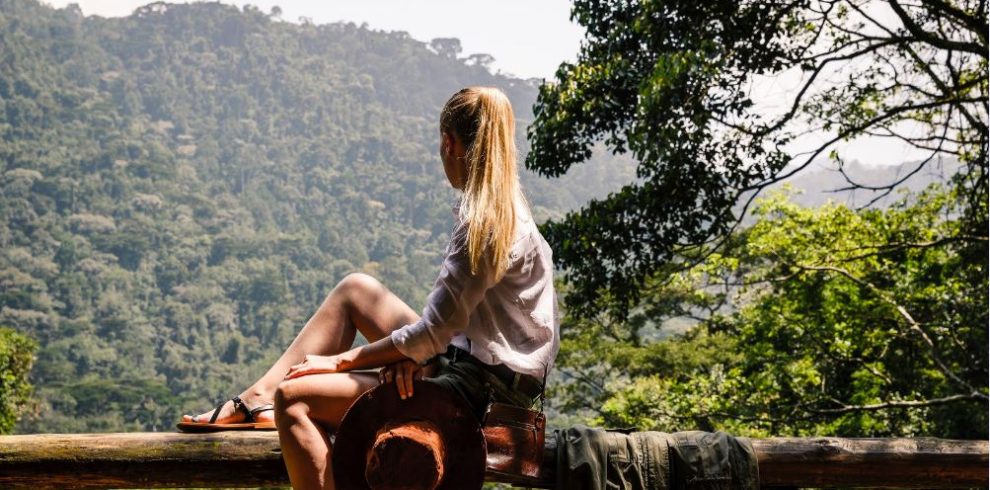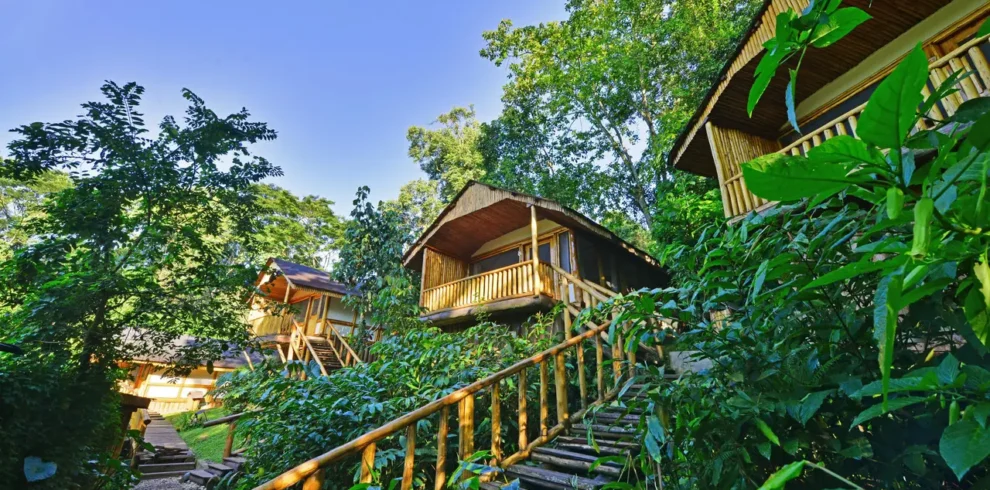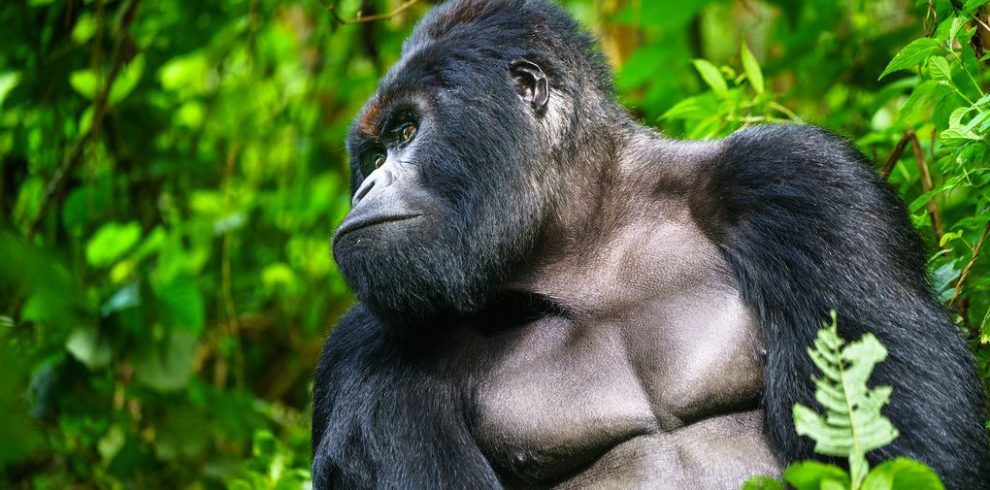Table of Contents
ToggleMany tourists are concerned about sustainability and the ethics of animal encounters. While programs, where animals are kept and bred in captivity, are the main ones under scrutiny, it is also worth questioning whether tourism activities with free-roaming animals are ethically sound. This brings me to the case in point – going gorilla trekking.
Trekking Mountain gorillas in Uganda and Rwanda is one of Africa’s most thrilling wildlife experiences. After jumping in a vehicle and driving through quite rural villages, you head into the jungle on foot and you’re soon assaulted by the ripe, potent scent of vegetation.
With every step, anticipation propels you forward, towards that moment when your one hour encounter with a gentle giant male silverback gorilla and his family begins. But getting close to the wild gorillas of Africa is a contentious issue.
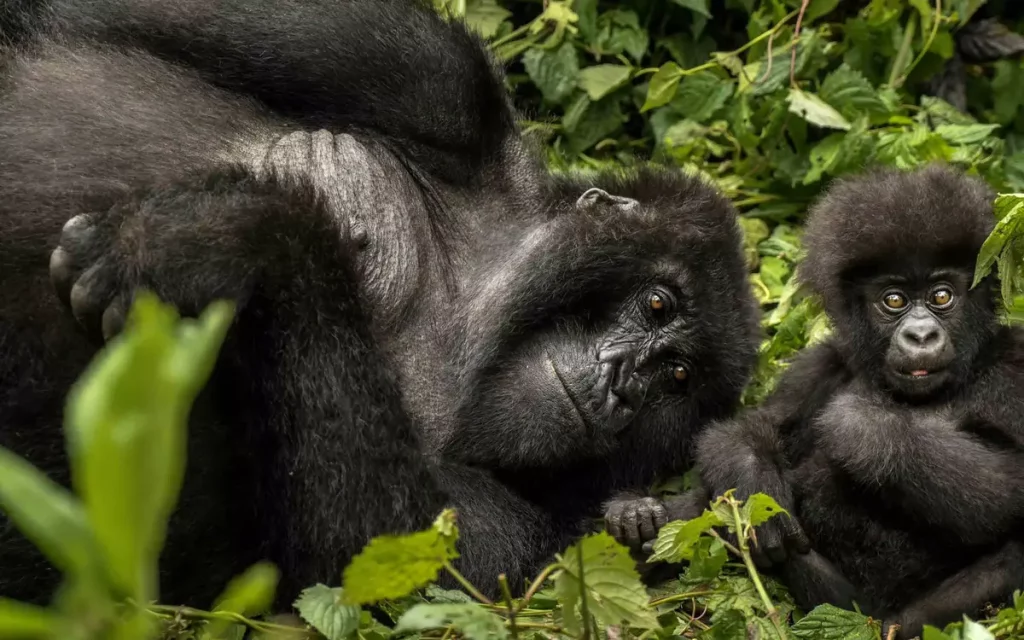
There is increasing scientific evidence that when tourists approach gorillas, it interrupts their well-being and endangers their health. Some believe it is no coincidence that in 2020, when tourists were nearly entirely absent there was a gorilla baby boom in Bwindi Impenetrable Forest as 12 of the 70 or so adult female gorillas in Uganda’s tourism-habituated gorilla families gave birth, rather than the normal 3 to 5 per year.
Is gorilla trekking ethical?
Questioning the impact of gorilla trekking tourism on the conservation of this species is especially crucial because gorillas are highly endangered primates.
In the 1960s, Dian Fossey – an American primatologist – was in East Africa studying mountain gorillas and pioneering conservation efforts on their behalf. During that time, there were only about 240 mountain gorillas left in the wild. Her work was undeniably essential in bringing the plight of mountain gorillas to the attention of the international community.
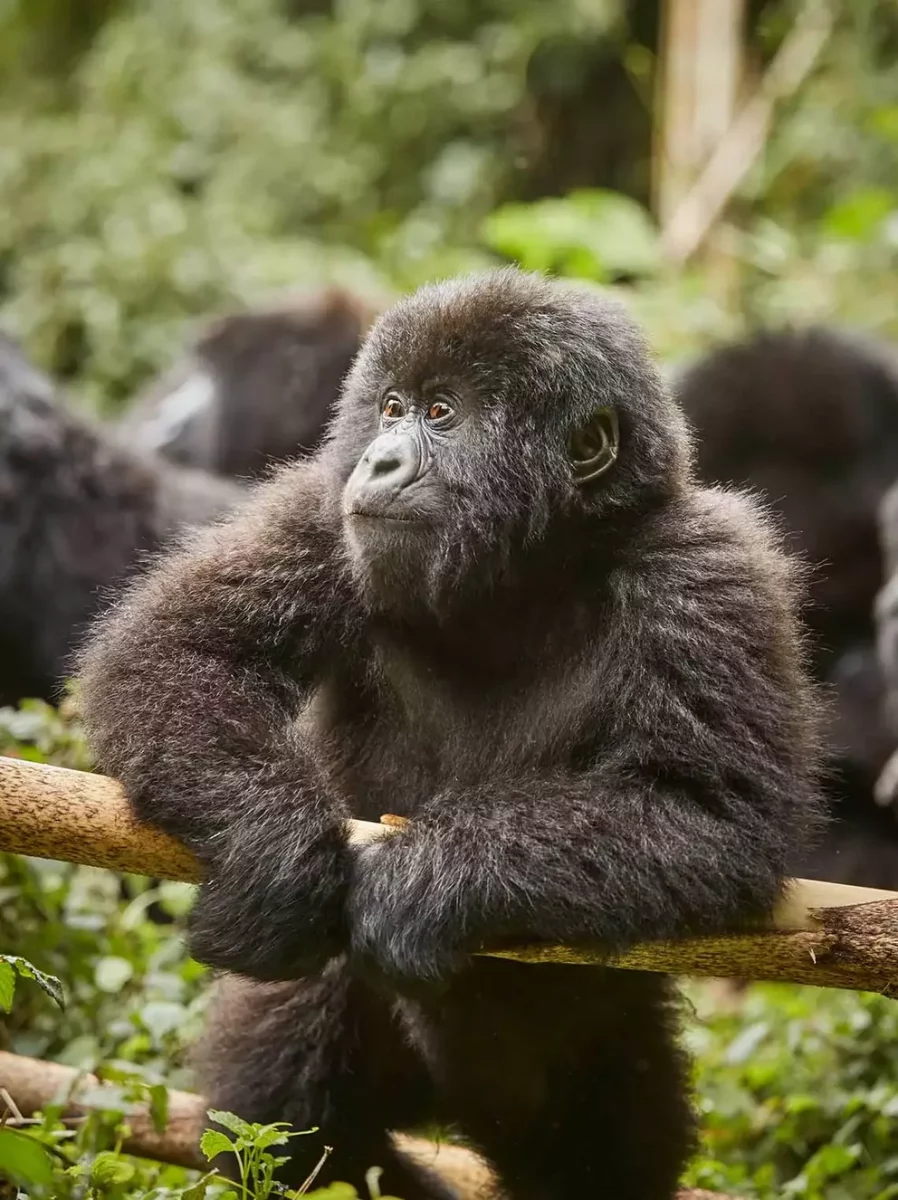
In the 1991, the Uganda Government responded to the mountain gorilla crisis by creating Mgahinga Gorilla National Park and Bwindi Impenetrable Forest National Park in the southeast of the country as protected habitats.
The Governments of Rwanda and DR Congo also hard established Volcanoes National Park and Virunga National Park respectively, which shares an ecosystem with Mgahinga Gorilla National Park. These four parks provide a safe haven for mountain gorillas, protecting them from;
- Habitat loss (deforestation)
- Poaching
- Transmission of human diseases
- Human conflict (civil war and political unrest)
- Hunting (bushmeat and trophies)
- Human-wildlife conflict
After these gorilla national parks were established in Uganda and Rwanda, a few of their gorilla families were put through the process of habituation, which is where the gorilla families are slowly introduced and made used to human presence.
The gorilla habituation was undertaken with tourism in mind, because when the gorilla families were fully habituated, it became possible for human visitors to trek and see gorillas in the wild.
Is Gorilla Trekking Tourism Helping With Gorilla Conservation?
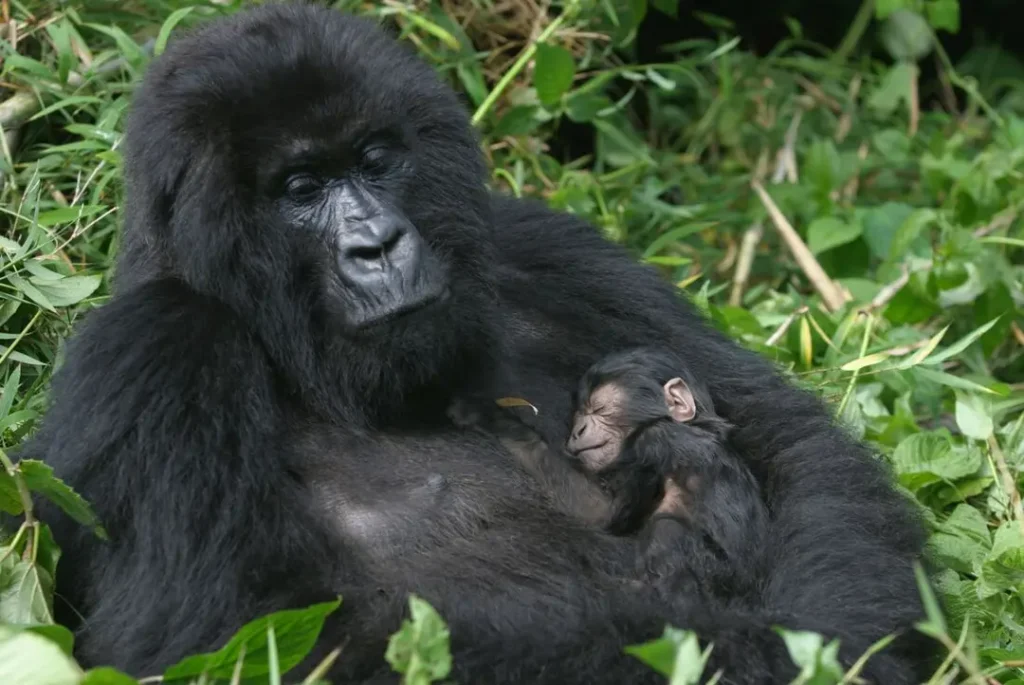
Generally, gorilla trekking tourism is seen as being successful in terms of reducing the amount of poaching and increasing the population of mountain gorillas. According to World Wildlife Fund (WWF), as of early 2019, mountain gorillas number over 1,000, up from 780 in 2010.
In November 2018 the International Union for Conservation of Nature (IUCN) downgraded them from being a Critically Endangered species to Endangered species.
This has been possible in part because the wildlife authorities in Uganda and Rwanda have not cashed in on the high demand for gorilla trekking safaris from tourists. But still keep the number of gorilla trekking permits limited. This is so that the gorillas are exposed to minimal human activity; an hour a day, with no more than 8 people in a trekking group.
This is impressive when compared with other wildlife encounters of jeeps en masse that we witness in other parts of the world, and where wildlife guiding is still all about keeping the client happy. And, indeed, gorilla trekking tourism is often cited as being an exemplary form of wildlife tourism that is a win-win when it comes to conservation and species preservation.
However, with this strict conservation management system comes stringent rules – the gorilla trekking rules. And it is critical that these are adhered to at all times to ensure that we do not harm the gorillas or their habitats by spreading disease and bacteria.
Gorilla Trekking Rules
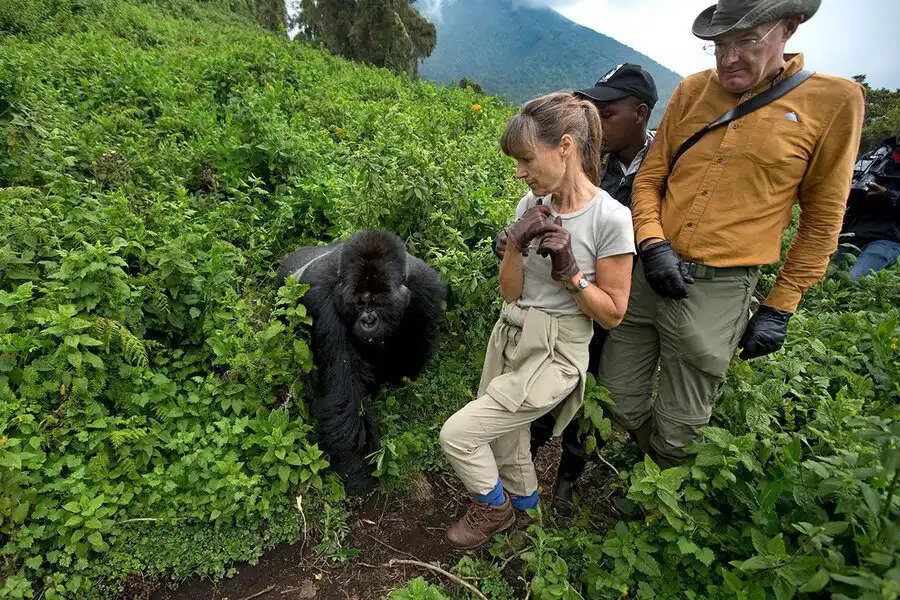
You will be briefed on these gorilla trekking by your tour operator and the guides at the gorilla parks, but the main gorilla trekking rules are as follows:
- Do Not Go Gorilla Trekking If You Are Ill: Gorillas and humans share 98 % of the DNA, which makes these apes highly susceptible to human-borne infectious diseases. And gorillas do not have the same immune systems as humans to fight off our diseases, leaving them vulnerable.
- You Need A Permit To Trek Gorillas: Expensive permitsare needed for gorilla trekking in Uganda, Rwanda and this need to be purchased in advance. A limited number of trekking permits are issued, in order to restrict the number of tourist groups, as well as the size of the groups, that visit the gorillas each day.
- Do Not Touch the Gorillas – Keep a 7 Meter Distance: This help to minimize contact and thus the spread of viruses. However, sometimes gorillas approach people, coming closer than is recommended. If a gorilla approaches you, you need to stay put, not make any sudden movements and avert your gaze to avoid appearing confrontational. This means people and gorillas get closer to each other than the safe distance required. It is one of the reasons why trekking gorillas with surgical masks on, is highly recommended, even in areas where masks are not required.
The Rights Of The Batwa
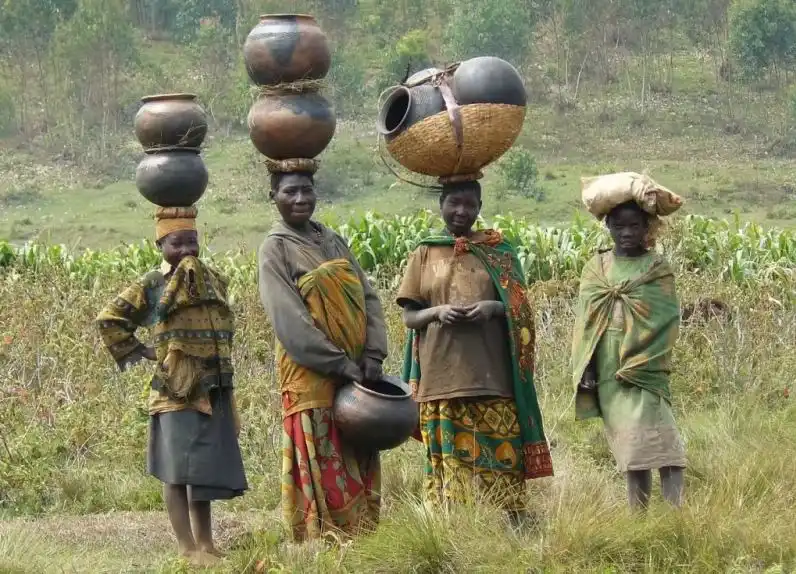
Sadly, the creation of gorilla parks also involved serious maltreatment of the Batwa – a pygmy tribe – whose ancestral tribal lands included much of Uganda’s Mgahinga Gorilla and Bwindi Impenetrable Forest National Park.
They were evicted and most of them are still living, many squatting, on the fringes of the parks, struggling to adjust to new lifestyles outside the forest or indeed survive. Their displacement was done out without any consultation or consent of the people, nor with any public hearing.
While a handful of Batwa families have been given short land leases, their futures are still hanging in the balance after that. Most of the families have been left without land and, therefore, ways to make a living. A living that was totally sustainable before their evictions, as they had survived for centuries hunting and gathering in the forests.
It was believed that the Batwa killed mountain gorillas for meat and they were blamed for any poaching that would occur. But, the Batwa don’t eat gorilla meat, and have co-existed with them for centuries. Sadly, racial discrimination against the Batwa Pygmies is common and now a huge issue. The irony is that as we tourists visit the gorillas, and help fund their survival, the few thousand members of Batwa tribe in Uganda are in danger of extinction.
What You Can Do
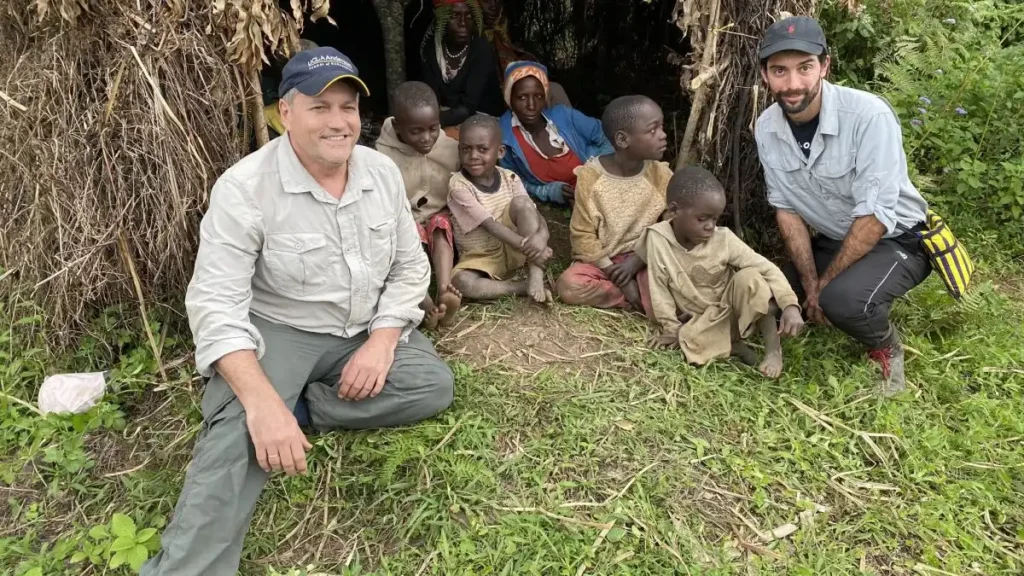
Support community tourism initiatives that support the Batwa People, such as the Batwa Trail in Mgahinga Gorilla National Park. Here, members of the Batwa tribe take you on a guided walk through their lands. You will be immersed into how they forage for and prepare food, their traditional hunting techniques, their age-old traditions of medicine making and witnessing first-hand their symbiotic relationship with nature.
This excursion generates direct income for the Batwa guides, but also builds awareness and generates further income for the education and general assistance of the wider community.
It is a thought provoking experience, given that tourists now have more ease of access to Batwa’s ancestral lands than they do. If you would like to know more about the Batwa Pygmy People, their situation and how you can help, please visit their profile page on the Minority Rights Group International website.
Other Support - Veterinary & Health Care
The Uganda Wildlife Authority (UWA) employs enough veterinary officers in the gorilla parks to keep the mountain gorillas healthy. Also, mountain gorillas have been successfully treated by the Gorilla Doctors. This non-profit organization provides life-saving medical care in all 3 countries where wild mountain gorillas are found.
A well-established NGO called Conservation Through Public Health (CTPH) is also working to improve health care in local communities and to educate people about disease transmission, livestock issues, mountain gorillas, and human health.
Founded and run by Dr. Gladys Kalema-Zikusoka, CTPH is currently researching disease transmission between humans and gorillas; including the impacts that growing numbers of tourists have on the health and well-being of gorilla populations in Bwindi. To find out more about the work that CTPH is doing in Uganda and watch 3 interviews with Dr. Kalema-Zikusoka, visit this CNN post – Are human viruses killing the world’s last remaining gorillas?
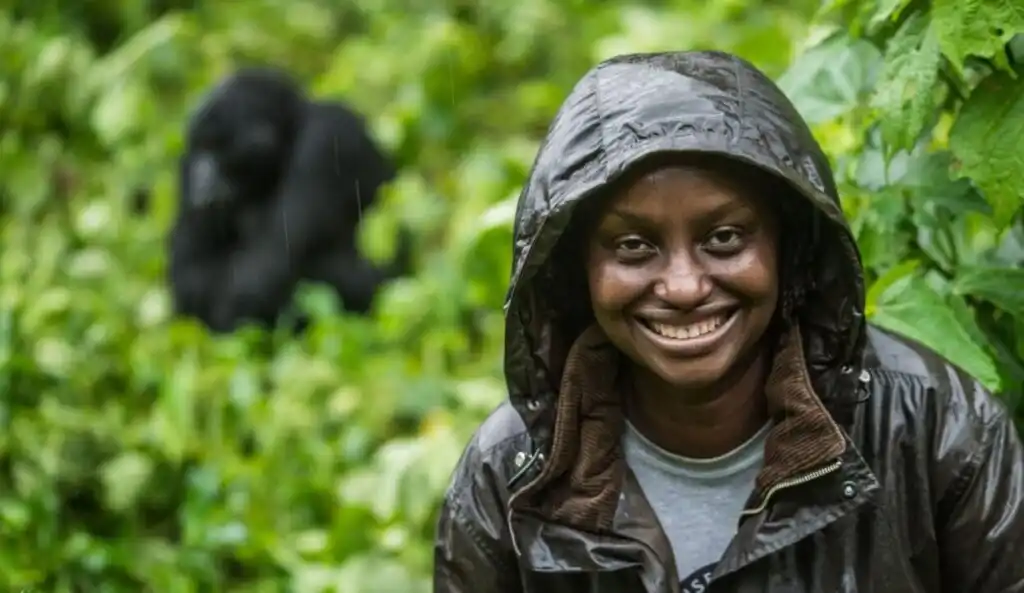
More Responsible Tourism Tips
- When you arrive at the gorilla trekking starting point, you will be asked if you would like a porter. There are always more porters than there is work. And many of these men and women will have walked miles to get there just to get a day’s work. So, it is really worth hiring them, even if you don’t really need one. The going rate is about £9-15 but people often tip on top of that as well.
- Most of these porters come from local communities. Some of them have a history of poaching gorillas for the sale of bush-meat. Thus, by employing them as porters, we are demonstrating that the mountain gorillas are worth more alive than dead.
- Rwanda is still recovering from the horror of the 1994 genocide in which around a million people were murdered in just 100 days. Many people lost relatives and friends and today most people still don’t want to discuss it but try to move on. Consequently, be wary of asking someone about their ethnic origin as it is still a very sensitive area. Do take time to visit the memorial sites around the country, however, as well as the Kigali Genocide Memorial Centre.
- Habituation is an important part of gorilla conservation, whereby the gorilla families are slowly introduced to human presence over a period of three to two years, before tourists are allowed to see them in larger family groups. Bwindi Impenetrable Forest National Park offers you the chance to take part in a day of habituation with scientists and conservationists.
- Respect local people and don’t take photos of them without asking.
In Short: Gorilla Trekking Help Gorilla Conservation
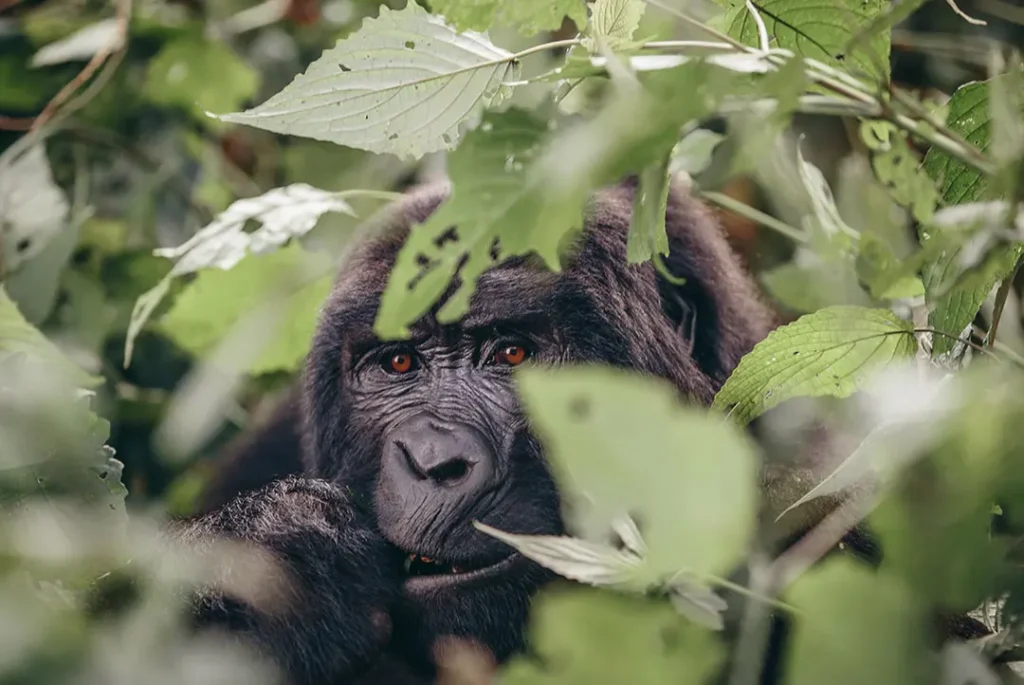
In summary, while gorilla trekking safaris does add to the risk of exposing gorillas to human diseases, the tourism industry does not undermine gorilla conservation on the whole.
For the benefits of gorilla tourism to continue outweighing the negatives, gorilla trekking needs to be managed carefully and effectively.
Gorilla tourism helps by supporting efforts to protect these endangered apes and improve local community conditions. Also the increasing number of travellers going to see gorillas in the wild is proving to be a key factor in the fight for the survival of this species.
Every tourist who buys a gorilla trekking permit to see gorillas contributes to their conservation by helping to fund the management of the parks, the monitoring of gorillas, and the salaries of park rangers patrolling the forests to protect gorillas from poaching.
Every tourists that supports the local economies, stays in local lodges, hires local operators, participates in local activities, and eats in local establishments, helps to create more healthy communities in and around the parks that provide safe havens for the last mountain gorillas.
If you are off to trek mountain gorillas in Africa, do so responsibly, by following the gorilla trekking rules, and listening to instructions of your instructions in the forest. And if you are ill, even if you have ‘the sniffles’ or a sore throat, do NOT trek gorillas.

